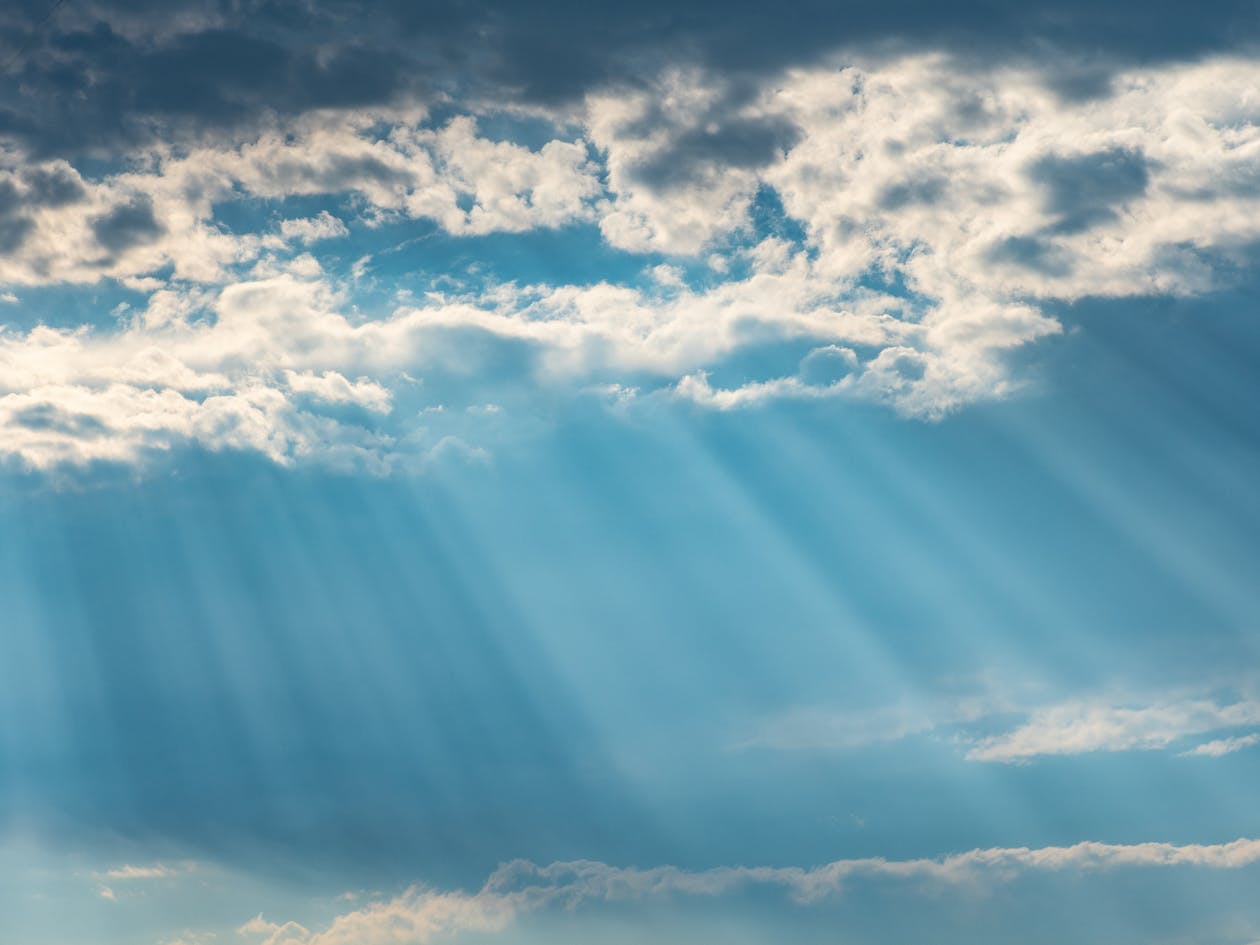Scientists Want to Spray 12 Million Tons of Particles Into the Sky Every Year – Here’s Why

University College London researchers published computer models showing how commercial cargo planes could deliver massive quantities of particles into Earth’s atmosphere. Fleet of 102 modified Boeing jets flying continuous missions over polar regions could begin operations within years rather than decades. What they’re proposing sounds like science fiction, yet scientists insist desperate times demand exploring uncomfortable solutions.
Proposal involves intentionally replicating what volcanic eruptions do accidentally: creating reflective particle layers that block incoming sunlight. Mount Pinatubo demonstrated this effect in 1991 when sulfur dioxide reached stratosphere and measurably cooled the planet for months. Now researchers want to do this deliberately, continuously, and on planetary scale.
Controversy erupts immediately when scientists suggest intervening directly with Earth’s climate systems. Questions about who controls planetary thermostat remain unanswered. Yet research continues because climate emergency might eventually demand choosing between terrible options and catastrophic consequences.
Radical Plan to Dim the Sun Using Commercial Jets
UCL scientists propose spraying sulfur dioxide into stratosphere at altitudes commercial aircraft already reach. Twelve million tons of particles needed annually to produce meaningful cooling effects. Boeing 777F cargo planes could execute missions without requiring development of specialized high-altitude aircraft that don’t currently exist.
Stratospheric aerosol injection represents geoengineering technique gaining research attention despite serious ethical and practical concerns. Method involves releasing materials into upper atmosphere where they transform into reflective particles remaining suspended for months or years.
Computer modeling using UK Earth System Model tested 41 different injection strategies varying altitude, latitude, and seasonal timing. Results showed lower-altitude approaches near polar regions could work despite being less efficient than tropical high-altitude strategies previously considered optimal.
Lead author Alistair Duffey, PhD student at UCL’s Department of Earth Sciences, explained findings: “Solar geoengineering comes with serious risks and much more research is needed to understand its impacts. However, our study suggests that it is easier to cool the planet with this particular intervention than we thought. This has implications for how quickly stratospheric aerosol injection could be started and by who.”
Nature Already Showed Us This Works

Mount Pinatubo eruption in Philippines during 1991 injected massive quantities of sulfur dioxide into stratosphere. Volcanic material created reflective particle layer that produced observable global temperature dip lasting several months. Natural experiment demonstrated principle behind deliberate climate intervention proposals.
Scientists want replicating what nature accomplished accidentally through volcanic activity. Difference involves controlled, ongoing deployment rather than unpredictable natural disasters. Sulfur dioxide transforms into tiny particles that reflect fraction of incoming sunlight back to space before it reaches Earth’s surface.
Roughly 12 million tons represents approximately same amount added by Pinatubo eruption. Computer models suggest this quantity could reduce global temperatures by around 0.6°C if deployed annually at proper altitudes and locations. Observable cooling would roughly reverse one decade of current warming trends.
Original Plan Required Aircraft That Don’t Exist
Previous research assumed stratospheric aerosol injection required flying at altitudes exceeding 20 kilometers above sea level. Commercial aircraft cannot reach these heights safely with meaningful cargo loads. Specially designed high-altitude planes would need development from scratch.
Timeline for designing, building, and certifying new aircraft capable of operating at required altitudes could stretch beyond ten years. Cost estimates reach several billion dollars before first deployment flights begin. Technical barriers made entire concept seem distant and impractical despite theoretical promise.
High-altitude approaches faced additional challenges including extreme operating conditions, crew safety concerns, and limited payload capacities. Novel aircraft designs remained speculative with significant engineering uncertainties about whether promised performance could actually be achieved.
New Computer Models Reveal Lower Altitude Option

UK Earth System Model simulations tested injection strategies at various altitudes, latitudes, and seasons. Results showed meaningful cooling achievable at just 13 kilometers altitude rather than 20 kilometers previously assumed necessary.
Lower altitude works specifically near polar regions where stratosphere sits closer to ground than near equator. Injection at 60 degrees north and south latitude—roughly Oslo, Norway and Anchorage, Alaska positions—could produce significant effects despite reduced efficiency compared to tropical high-altitude strategies.
Commercial Boeing 777F cargo aircraft routinely fly at altitudes reaching 13 kilometers. Existing planes could be modified to vent sulfur dioxide during flight rather than requiring completely new aircraft designs. Technical barriers drop dramatically when using proven aircraft already in production.
Wake Smith, lecturer at Yale School of Environment who co-authored research, noted: “Although pre-existing aircraft would still require a substantial modification programme to be able to function as deployment tankers, this route would be much quicker than designing a novel high-flying aircraft.”
Lower altitude means particles remain suspended for only months rather than years achieved at higher elevations. Reduced residence time requires three times more material to produce equivalent cooling effects. Strategy achieves just 35% of high-altitude efficiency.
Injecting 21 million tons annually at low altitude produces same temperature reduction as 7.6 million tons at high altitude. Increased material volume amplifies environmental side effects including acid rain formation. Triple quantity means triple chemical contamination entering atmospheric systems.
Particles don’t stay aloft as long when released at 13 kilometers compared to 20 kilometers. Gravity and atmospheric circulation patterns pull materials downward more quickly at lower elevations. Continuous replenishment becomes necessary to maintain reflective layer blocking sunlight.
Fleet of 102 Modified Boeing Jets Required

Each modified Boeing 777F could carry approximately 110 metric tons of sulfur dioxide payload. Flying average 5.7 sorties daily with 10% downtime for maintenance, fleet of 102 aircraft could deliver required annual quantity of material.
Small fraction of current Boeing manufacturing capacity would suffice for building necessary fleet. Company currently produces 36 of these aircraft annually, meaning required two planes per year represents minor diversion of existing production.
Operations could begin within years rather than decades required for developing novel high-altitude aircraft. Reduced timeline makes proposal more realistic from implementation standpoint but also increases risks of rushing into planetary-scale experiment without adequate preparation.
Serious Side Effects Include Acid Rain Risk

Sulfur dioxide reacts with atmospheric water vapor forming sulfuric acid, key component of acid rain. Tripling material quantities to compensate for reduced altitude efficiency increases acid rain risks proportionally. Regional precipitation chemistry faces disruption from continuous particle injection.
Ecosystems could experience unexpected acidification affecting soil chemistry, water bodies, and vegetation health. Environmental contamination from deliberate injection differs from natural volcanic events because continuous deployment maintains elevated sulfur levels indefinitely.
Computer models cannot predict all real-world effects of sustained chemical additions to atmospheric systems. Unexpected interactions with weather patterns, ocean chemistry, and biological systems remain possibilities that simulations might miss entirely.
Tropics Get Less Cooling Than Polar Regions
Polar injection strategy produces more concentrated cooling at high latitudes while tropical regions receive proportionally less benefit. Greatest direct climate vulnerability exists in tropical developing nations that contributed least to emissions causing warming.
Environmental justice concerns arise when people most affected by climate change receive smallest benefits from intervention designed to address problem. Unequal distribution of cooling effects creates geopolitical tensions about who benefits and who bears risks.
Reduced effectiveness in tropics represents significant disadvantage of low-altitude polar approach. Populations facing highest temperatures and most severe climate impacts would see limited relief while potentially experiencing side effects from global aerosol deployment.
Catastrophic Risks if System Suddenly Stops
Stratospheric aerosol injection must be introduced gradually and reduced gradually to avoid temperature shocks. Sudden termination causes rapid warming rebound as reflective particles settle out of atmosphere within months.
Dependencies create vulnerabilities to political instability, technical failures, or funding disruptions. Once started, commitment extends decades or longer because stopping produces worse climate disruption than never beginning. Planet becomes dependent on continuous flights maintaining particle layer.
Long-term commitment requirement raises questions about maintaining operations through wars, economic crises, or political changes. No guarantee exists that future generations will continue program inherited from predecessors who made initial deployment decisions.
Not a Replacement for Cutting Emissions
Dr. Matthew Henry from University of Exeter emphasized limitations: “Stratospheric aerosol injection is certainly not a replacement for greenhouse gas emission reductions as any potential negative side effects increase with the amount of cooling: we can only achieve long-term climate stability with net zero.”
Geoengineering treats symptoms rather than underlying cause of climate change. Atmospheric carbon dioxide continues accumulating even while particles block some incoming sunlight. Ocean acidification, caused by dissolved carbon dioxide, continues unabated regardless of temperature management.
Side effects scale with cooling amount attempted. Larger temperature reductions require more material, producing proportionally greater environmental contamination and unintended consequences. Only sustainable approach combines emission reductions with potential temporary use of geoengineering during transition period.
Who Gets to Control Earth’s Temperature?
Reduced technical barriers mean more nations or entities could potentially deploy stratospheric aerosol injection unilaterally. No international governance framework exists for regulating planetary-scale climate interventions. Questions about authority and decision-making remain unresolved.
Risk of poorly planned deployment by single actor increases when technology becomes accessible to more parties. International cooperation seems necessary but remains elusive given geopolitical tensions and competing national interests. Who decides optimal temperature for entire planet when different regions experience varying impacts?
Geopolitical tensions over climate intervention authority could escalate into serious conflicts. Nations suffering from deployment side effects might view actions as environmental warfare. Lack of consensus about governance creates dangerous vacuum where unilateral action becomes possible.
UK Government Commits £50 Million for Research
Advanced research funding agency launching experiments testing effectiveness of various geoengineering schemes. Policy makers need evidence for informed decisions about whether and how to proceed with climate interventions.
Research continues despite controversial nature because climate emergency demands understanding all available options. Scientists stress importance of studying potential interventions before emergencies force hasty decisions without adequate knowledge of consequences.
Evidence gathering through modeling, small-scale experiments, and comprehensive impact studies helps evaluate whether benefits could ever justify enormous risks. Knowledge about geoengineering options provides flexibility for future decision makers facing worsening climate scenarios.
Understanding All Options in Climate Emergency
Climate crisis severity might eventually force choosing between terrible options rather than ideal solutions. Research into geoengineering doesn’t represent endorsement but rather recognition that future circumstances could demand considering previously unthinkable interventions.
Question remains whether benefits outweigh enormous risks associated with deliberate planetary-scale atmospheric manipulation. Computer models provide estimates but cannot capture full complexity of Earth system responses to unprecedented chemical interventions.
Scientists emphasize need for caution while acknowledging urgency of climate situation. Balance between preparing for worst-case scenarios and avoiding premature deployment of dangerous technologies requires ongoing international dialogue and careful risk assessment.
Loading...

